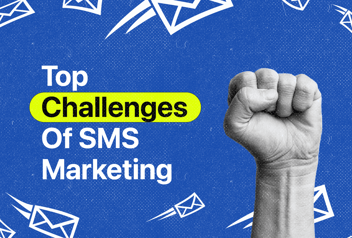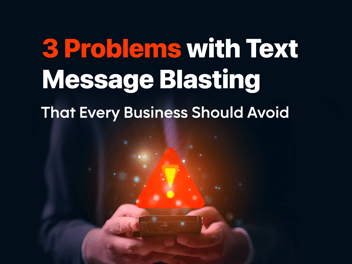5 Little-Known Marketing Strategies To Increase Student Enrollment
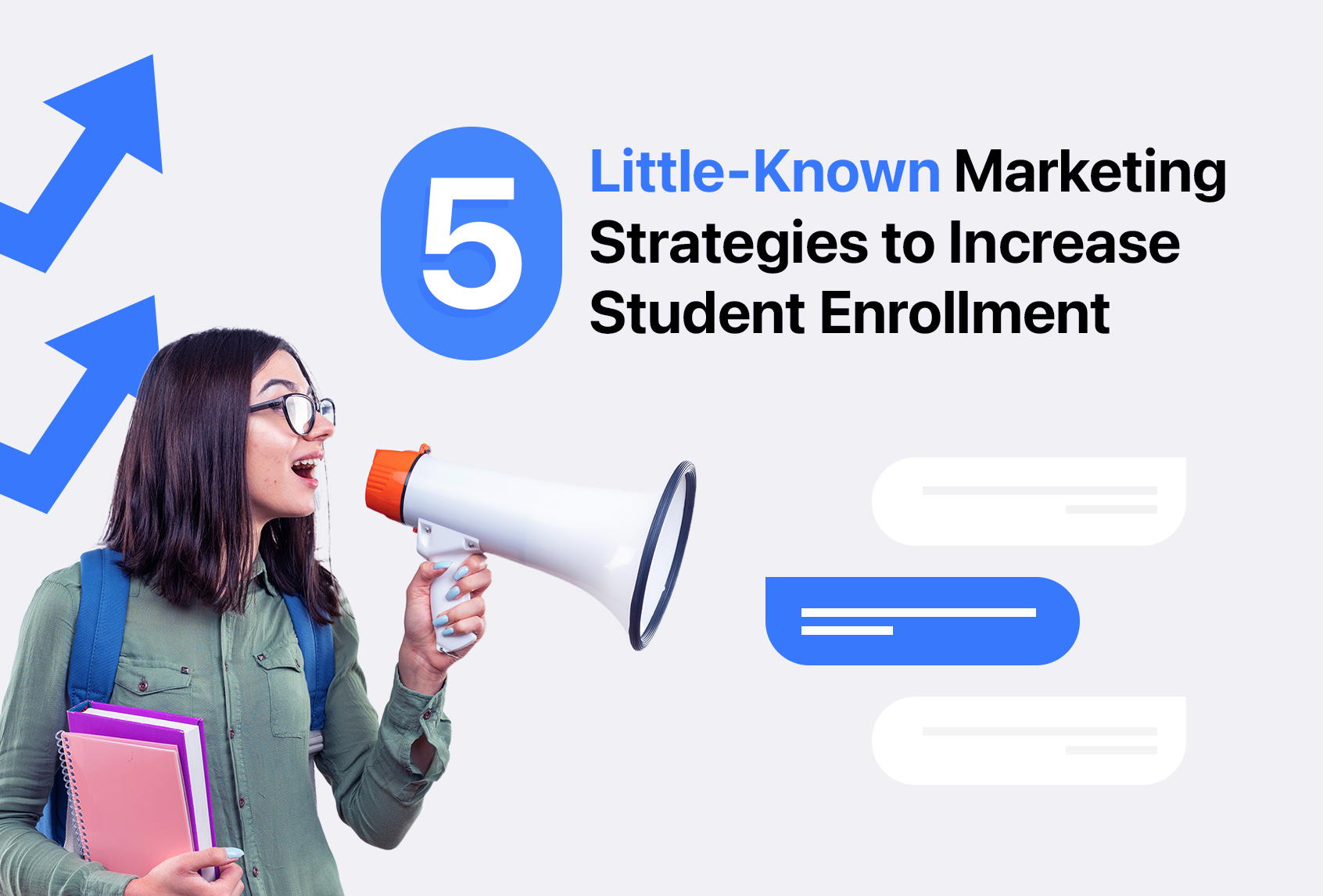
In the wake of the COVID-19 pandemic, it's near impossible to name an industry that went unscathed. Education was among the hardest hit: College enrollment saw a dramatic decrease in 2020, and any improvements since then have been a slow crawl.
It's incredibly frustrating to watch as your class seats remain empty and your admissions dwindle. What happened to all of your previously interested potential students? And more importantly, how can you regain their attention?
The key to getting student enrollment back on track is effective marketing – but not, perhaps, as you know it. Education marketing has evolved significantly in recent years, and most of the strategies that traditionally worked to attract college-age students have been overtaken by better solutions.
So, what can you do? Read on for five little-known marketing strategies to increase student enrollment at your college or university. We're here to help you pull those leads back in like a magnet.
When the ‘traditional’ strategies fail, it’s time to get creative
You've been cold calling, sending out emails, and running ads in overdrive – but nothing seems to be working. It may feel like you’ve exhausted every option. The good news is that you've just begun to scratch the surface of potential marketing strategies.
Everyone seems stuck on the same tired playbook when it comes to admissions marketing. It’s understandable; marketing budgets tend to be tight in higher education. Many colleges also hesitate to position themselves as businesses, which can leave them behind the curve when it comes to marketing innovation.
It's not just an issue of marketing efforts; on all fronts, colleges seem reluctant or slow in embracing digital advancements fully. An Australian study even found that a whopping 90 percent of students worry their college will not provide a consistent digital experience throughout their time enrolled there.
Considering that the average institution spends around $500 on marketing for every enrolled student, ensuring each dollar spent has the maximum impact is crucial. With limited resources available for attracting prospective students and retaining current ones, institutions need creative solutions that maximize return on investment (ROI) while minimizing costs.
It's high time educational institutions ditch old methods and get creative with their admissions marketing strategies – for both financial reasons and staying competitive among other schools vying for target audiences' attention.
Set the right goals for increasing student enrollment
Sixty percent of students in a global survey said that the pandemic completely ruined their university experience. It's no wonder that we saw a barrage of dropouts and a serious dwindle in subsequent enrollments.
It's not an irreversible trend, however – and with solid goals in place, you're more than capable of turning the tide. Let's set some goals to direct your marketing focus before diving into the strategies.
- Establish an overarching goal. Your mission statement should focus on attracting the right students rather than simply ‘increasing enrollment’ in general. Think about what kind of student you'd like to attract; consider their goals, interests, and values.
- Break it down into measurable objectives. Your goals should be quantifiable and achievable, such as increasing your student enrollment by 15 percent in the next academic year, or improving conversion rates by 5 percent within six months.
- Determine your target audience. Don't just skim over demographics; drill down on who you want to reach and why they'd be interested in enrolling at your institution specifically. This information is going to come in handy for the strategies below.
- Set a budget. Marketing is going to cost money – and it's important that you have an idea of what you're willing to spend before diving in headfirst. Rather than limiting you, this is going to help you focus your efforts on only the most efficient strategies.
It's difficult to focus on setting solid goals and parameters when you're stressed about meeting enrollment numbers. You wouldn't be alone: 91 percent of admissions leaders feel pessimistic about hitting their targets.
With something tangible to aim for, though, you'll be able to stay focused on what matters.
5 Marketing Strategies to Increase Student Enrollment
Are you ready to get creative with your marketing strategies and reap the benefits? The strategies we're about to cover aren't rocket science – they are completely attainable for any college, and they take an innovative approach to marketing.
Keep in mind that none of these strategies are meant to be overnight cures. Instead, they are tools to help you create a solid foundation for your marketing efforts and make them more effective in the long run.
Strategy 1: Test different types of paid campaigns
Diving into the world of paid campaigns can feel daunting, especially when you're working with a limited budget. However, it's essential to remember that not all paid campaigns are created equal – and by testing various types of ads and platforms, you'll be able to pinpoint which ones deliver the best results for your institution.
Let's explore some key tactics in depth.
Retargeting/Remarketing Campaigns
Ever clicked out of an online store only to see ads showing you the exact items you had in your basket? This is called retargeting – and it's an extremely effective way to reel leads back in.
Retargeting (or remarketing) is a powerful tool that allows you to re-engage potential students who have previously shown interest in your institution but didn't convert.
Just because students walked away from your institution doesn't mean they're ruled out as targets; in fact, retargeting campaigns can be incredibly effective at persuading them to give your institution a second chance.
How it works
To get the most out of these campaigns, you'll need to craft compelling ad copy that speaks directly to potential students – and you'll also want to test different platforms and approaches.
For instance, Facebook Ads allow for extremely granular targeting based on demographics, interests and behaviors; meanwhile, Google Display Network ads provide more general exposure but are still highly effective.
Take a look at this retargeting ad by Nike, courtesy of WebFX:

With Google Display Network, you can create ads like this based on cookies (for instance, which courses the student was browsing). Simple copy like "Still want to further your education? We're here to help" can be effective at re-engaging potential leads.
Social Media Advertising
Social media platforms such as Facebook, Instagram, and Twitter have become indispensable tools for reaching potential students; they enable you to design highly targeted ads based on demographics, interests, and behaviors.
These platforms offer in-depth insights into user data that can help colleges refine their strategies and reach prospective students more effectively.
For example, marketers may use social listening techniques to identify popular topics or trends among specific age groups or locations. This information can then be leveraged in ad campaigns aimed at engaging those particular audiences.
The key here is to create copy that resonates with your target audience – after all, nobody appreciates being inundated with bland advertisements. It's crucial to strike a balance between providing valuable information about your institution and avoiding overly promotional language that might come across as insincere or pushy.
Cater to your audience
When crafting an ad promoting the advantages of studying at your college or highlighting course-specific scholarship opportunities, ensure that the messaging is customized specifically for your intended demographic.
Consider factors like age-appropriate language styles (e.g., using emojis or informal tone when targeting younger audiences), cultural relevance (e.g., referencing local events or communities), and addressing common concerns (e.g., emphasizing financial aid options).
Optimize where possible
It's essential not only to focus on creating captivating visual content but also on optimizing text elements like headlines and captions for maximum impact.
A well-written headline could grab users' attention as they scroll through their feeds, while a compelling call-to-action encourages them to take the desired action – clicking through to learn more about what you're offering.
Work through trial and error
Don't forget the importance of testing different ad variations within each campaign: try out various images and video formats alongside multiple copy versions until you find the combination that generates optimal results.
By continually refining your strategy based on measurable outcomes such as click-through rates or conversion numbers, you can ensure that your social media advertising efforts effectively reach and engage the right prospective students.
Create a 'Pattern Interrupt'
In psychology, a pattern interrupt is an unexpected event or message that disrupts the normal flow of thought and behavior. It's a powerful way to grab attention and trigger action. In your marketing efforts, it could be your new best friend.
Think back to one of the most iconic ads in men's cologne history. That's right – I'm on a horse.

Old Spice broke the conventions of traditional cologne advertising with this simple yet highly effective ad. It was an unexpected message that made viewers take notice – and it worked.
This strategy is all about turning traditional marketing on its head and coming up with something unexpected. Whether it's an online video featuring a professor in a rap battle or a billboard that challenges prospective students to "think differently," creating a pattern interrupt can help you stand out from the competition.
Strategy 2: Get creative with segmentation
Many colleges are left scratching their heads when it comes to their marketing efforts. If we're spending all this money and pumping out all this content, why aren't we seeing real results?
The reality is that you could be sending out more campaigns than any of your competitors – but if they're not personalized enough, it's all for naught. Research shows that the majority of consumers expect their needs and interests to be understood by companies.
Segmentation is key. It allows you to tailor your message to different audiences and increase the chances of conversion. You can use segmentation in a few different ways:
Demographic segmentation
One way to ensure your marketing efforts hit the mark is through demographic segmentation. This method allows you to target different age groups, genders, locations, and more.
For instance, research shows that Gen Z students will respond better to ads specifically designed for them than those targeting mature-age students. By considering demographics in your campaigns, you can craft personalized content that resonates with each group.
Psychographic segmentation
Dig deeper into understanding your audience by using psychographic segmentation. This technique examines values, interests, and motivations behind potential students' decisions – giving you the opportunity to create messages that speak directly to their core desires. By connecting on a more personal level with prospective students, this type of segmentation makes your campaigns even more effective.
Behavioral segmentation
Taking cues from how potential students behave can improve your marketing strategy significantly. Behavioral segmentation looks at what they do (e.g., website browsing patterns), what they buy (courses or materials), and how often they make purchases or engage with content related to education.
Harnessing this information helps develop campaigns tailored specifically toward their interests and needs.
Admissions segmentation by stage
Recognize that some ad targets may be partway through the admissions process while others are new prospects who haven't begun exploring options yet. Creating separate messaging for each stage increases the chances of getting positive results from these distinct audiences:
- Awareness - Focus on building brand recognition and providing general college program information.
- Interest - Delve deeper into specific offerings while emphasizing unique aspects that attract prospective students.
- Consideration- Tackle factors setting your institution apart from competitors; address concerns or barriers; showcase student success stories.
- Decision - Highlight key benefits and incentives related to choosing your institution over other options.
You've probably encountered segmentation many times before; it's a well-known and widely used strategy. Uber Eats is one of the best-known examples of behavioral segmentation – the app literally targets you based on when you usually order and what restaurants you like the most.
Strategy 3: Go bold with your ad campaigns
It's easy to get lost in the sea of competitors vying for student attention. If your ads aren't interesting enough to ensnare the attention of a distracted audience, you're not going to get very far.
Instead of simply providing information about courses or amenities, go for something creative that will make people take notice. Here are some stellar examples:
- The World Needs More Cowboys (University of Wyoming). With more than $6.1 million dollars in coverage, it's safe to say this video campaign was a success. Why? Because rather than just highlighting the courses and amenities of the university, it positioned students as 'cowboys' and 'explorers' taking a hike off the beaten path.

- Dare Northward (Colby College). If you saw this campaign, you know it spoke to the innate desire of the youth to contribute to something bigger than themselves. It presented Colby College as a place where students could dare to push boundaries – not just for their own benefit but to contribute to solving larger global issues.
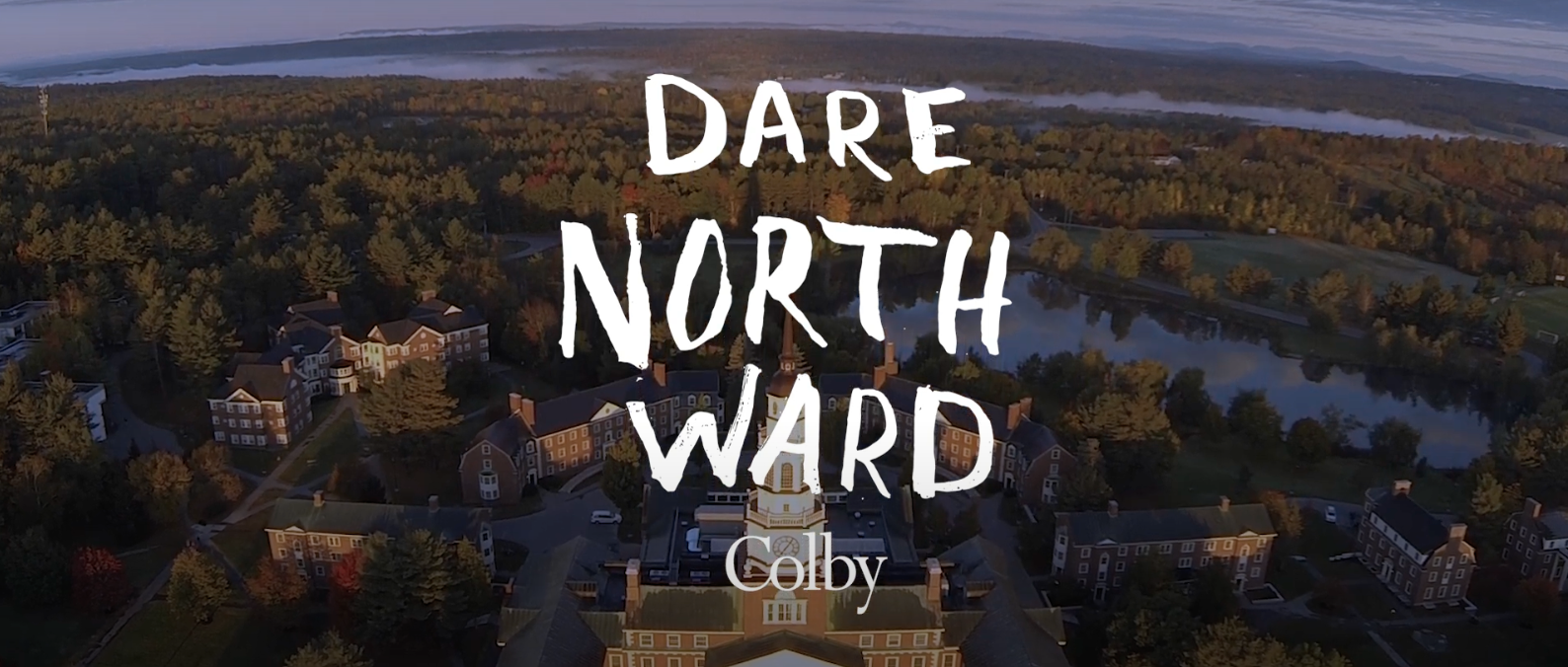
- Calling All Big Thinkers (University of Rhode Island). Short but sweet, RIU choose a catchy and compelling format that challenged dreamers and big thinkers to make a difference.
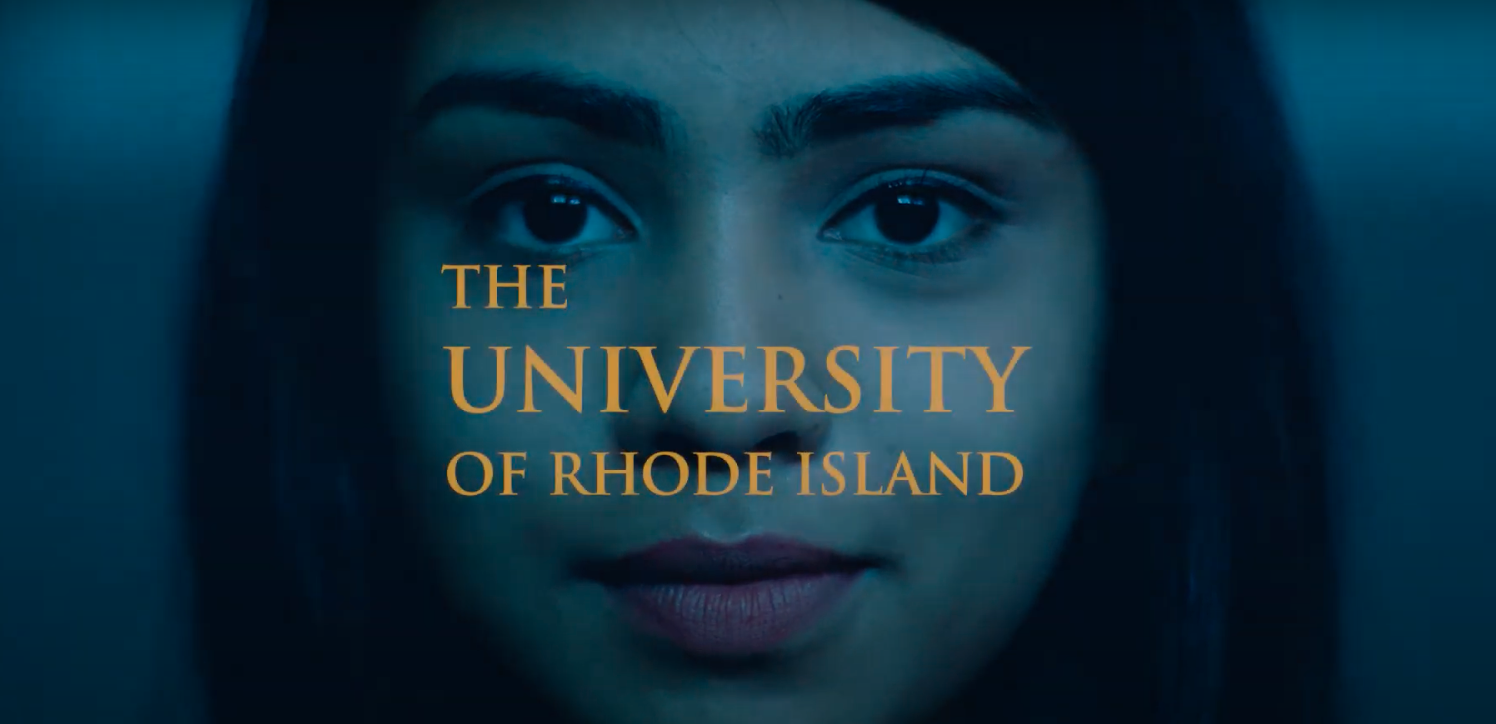
Those barely scrape the surface of the marketing achievements we've seen from universities. Draw inspiration from other industries, too. Who can forget the 'Taste the Rainbow' Skittles campaign, which used simple messaging paired with bright, vibrant colors to draw attention?
You don't need an expensive ad campaign in order to make an impact, either. One of McDonald's most effective campaigns, the 'Our Food, Your Questions' campaign, was based around a simple stitch-together of staff answering questions about the menu. "Instead of keeping the tough questions hidden, we made them louder."
Strategy 4: Utilize influencers
Influencer marketing has been gaining traction in almost every industry, and higher education is no exception.
You don't need to invest big bucks into a celebrity endorsement (although that doesn't hurt). Instead, you can focus on finding and engaging with micro-influencers or students who have already expressed an interest in your institution.
You'll want to look for people who have a strong connection to your school – alumni, current students, faculty members – and offer them incentives like free tickets or merchandise in exchange for sharing their experience with followers. This kind of organic reach will be much more effective than traditional advertising.
Considering that 83 percent of teens use TikTok, and 87 percent use Instagram, these are the spaces you really want to be targeting – and influencers are front and center in both. Let's look at a few angles your marketing team can take.
- Showcase the student experience: Have influencers show what life is like on campus, or have them provide a glimpse into their day-to-day activities. This will give potential students a tangible idea of what it's like to be a part of your school’s community; it feels much more 'real' than staged and polished ads.
- Share success stories: Have influencers share their successes and how attending your school helped them achieve those goals. It demonstrates that anyone can succeed with a little help from you.
- Host Q&As: Whether your influencers conduct these or you conduct them on your main social accounts, walk around campus and ask students (on camera) about different aspects of the student experience.
Influencer marketing puts a face to your institution and allows prospective students to connect with current members of the community. With plenty of options open to them, students are going to gravitate toward schools where they feel welcomed and supported.
Strategy 5: Try conversational text campaigns
Considering that 44 percent of Gen Z individuals check their phone within the first minute after receiving a text, it's no surprise that text-based campaigns are becoming increasingly popular with marketing professionals in the higher education space.
The challenges of SMS marketing are fierce, however – and there’s a very fine line between having your text messages read or having them discarded as spam. Conversational messaging is your best chance at success.
What is a conversational text campaign?
Put simply, the conversational text strategy takes text message marketing one step further by adding a human touch. Instead of simply sending out promotional messages in one-way blasts that feel like junk mail, you can use chatbots (which have become incredibly advanced) to actually engage in conversations with your prospects.
This approach can work for many different types of campaigns:
- Admissions – Your admissions team can answer questions about the process and provide helpful advice about what to expect.
- Orientation – Use conversational text campaigns to send out reminders for orientation events and help new students get acclimated quickly.
- Call scheduling – If a potential student has expressed interest, reach out via conversational chatbot to arrange a call or video chat.
Using an aged-inquiries campaign
For a lot of institutions, a lot of their potential leads are already in the contact books after expressing interest in the past – and that's an excellent, obvious place to start scaling up your enrollment.
An aged inquiries campaign targets leads who have already expressed interest but haven't yet enrolled. With an AI text messaging platform that can understand intent and ensure deliverability – like ours, Meera – you can send out automated messages that remind prospects of their original interest and provide additional information about the course or program they were interested in.
This way, you're not wasting time on leads with no potential; you're focusing on those people who have already expressed an interest but need to be reminded of the great opportunities at your institution.
Transitioning from marketing campaign to digital assistant
The beauty of an AI-powered outreach system is that, with the right platform, you'll be able to transition seamlessly from executing marketing campaigns to employing it as a digital assistant.
Imagine, for example, that one of your students responds to your aged-inquiries campaign and expresses interest in the Master's program at your university.
A conversational AI system (whether designed from scratch or out of the box) can then turn the text conversation into a back-and-forth dialogue to arrange calls, provide additional information, and even help the student with the enrollment process.
Penn Foster College's conversational success
At Penn Foster College, one of the most venerable distance-learning institutions in the U.S., the pandemic wreaked havoc on admissions; only 1.5 percent of aged inquiries were converted amid post-COVID challenges. The admissions team decided to give conversational messaging with Meera a shot to convert their aging inquiries.
The results were impressive: there was a 47 percent boost in lead-to-enrollment conversions, and revenue shot up by $1.2 million.
The power of conversational messaging is immense. Students want to feel understood and listened to, not barraged with blast campaigns that feel impersonal and robotic.
Key takeaways
It's easy to feel disheartened by the almost universal drop in consumer interest and conversion we've seen over the past couple of years. Industries have been hit hard, with higher education among them. The key, however, is to see this trend as a temporary one – and to take back control via smart marketing strategies.
You've already got leads from aging inquiries; re-ignite the interest in those leads with conversational text campaigns and watch conversions soar. Utilize influencers to help showcase the student experience, and don't be afraid to get bold with your targeted advertising campaigns.
If you can break away from the tired, traditional marketing strategies and lean into the newer technologies affording you more creative and personalized approaches, your admissions goals will not only be attainable – they’ll be blown away.


.png?width=512&height=512&name=guru%20(1).png)
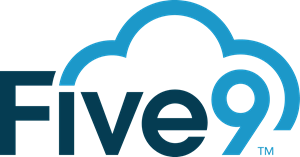
.png?width=199&height=109&name=salesforce-logo1-removebg-preview%20(1).png)


.webp?width=716&height=569&name=banner-img%20(1).webp)

